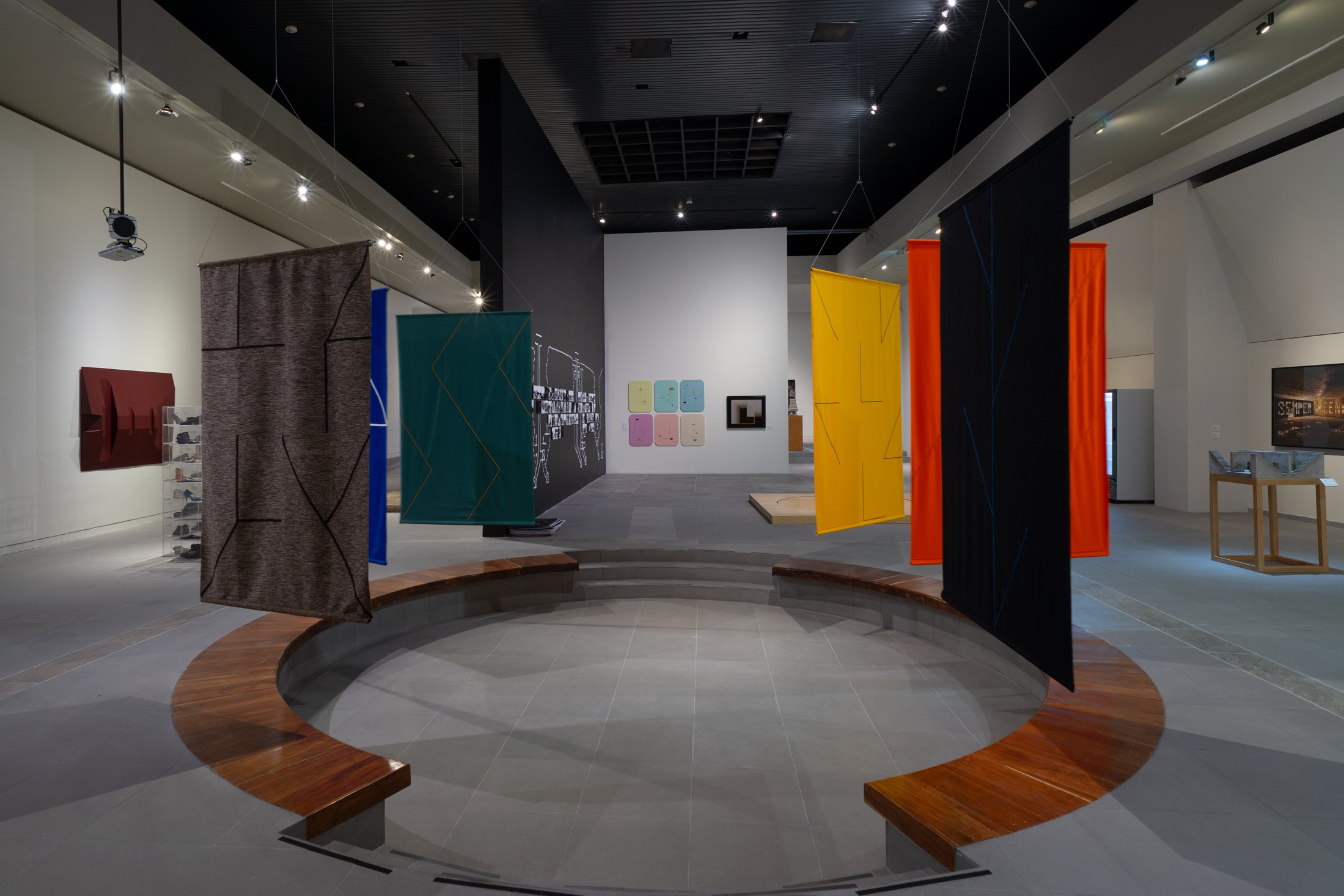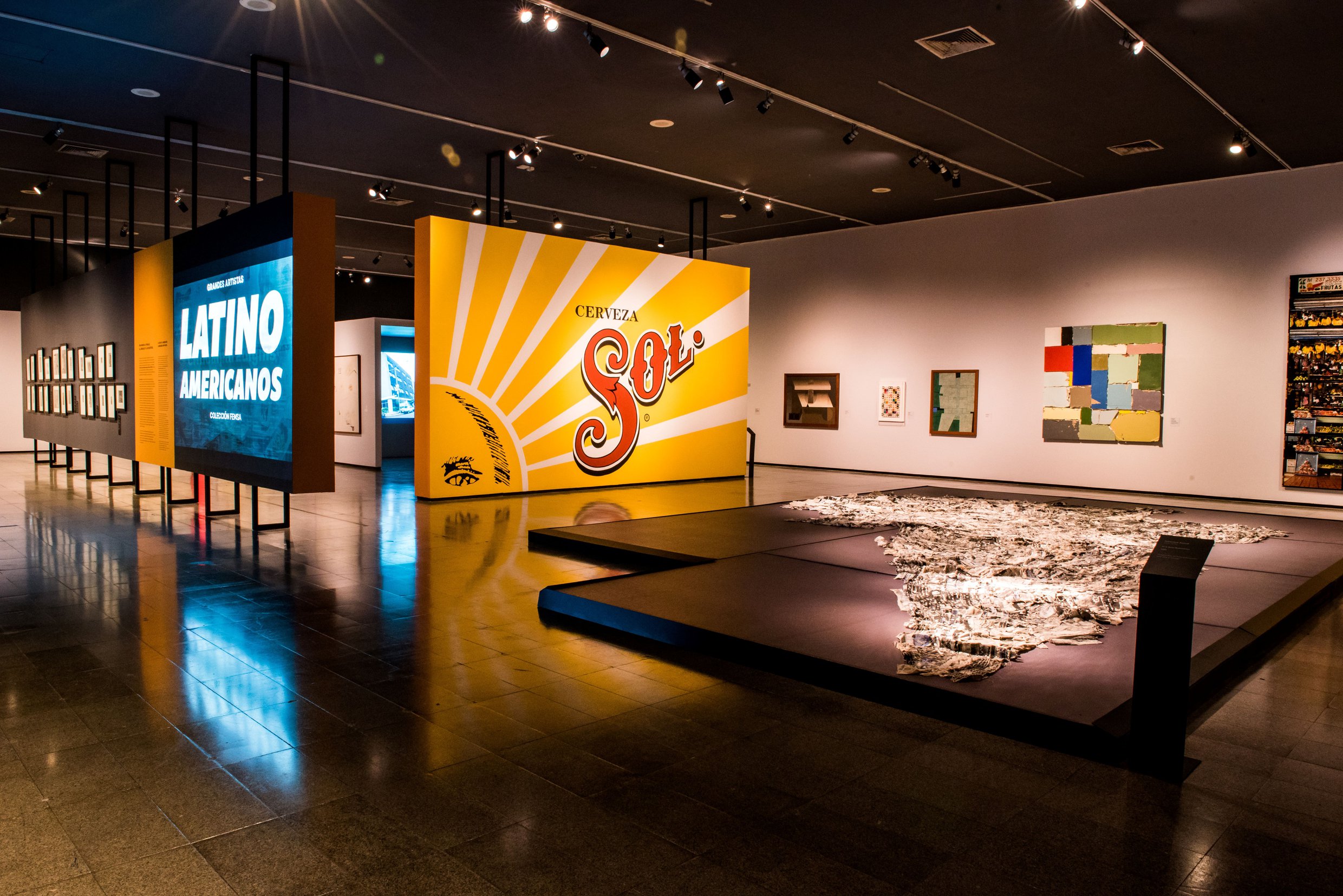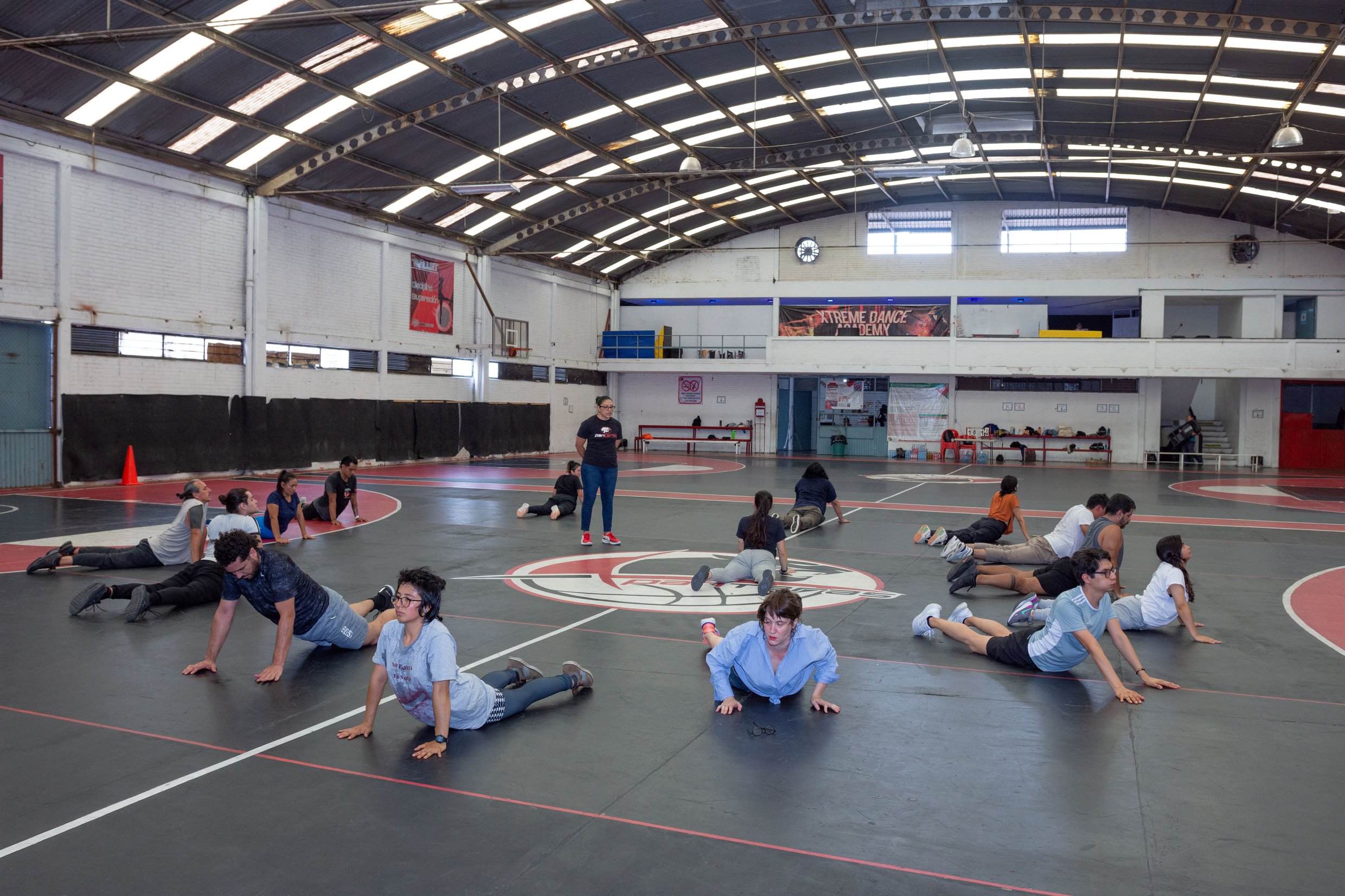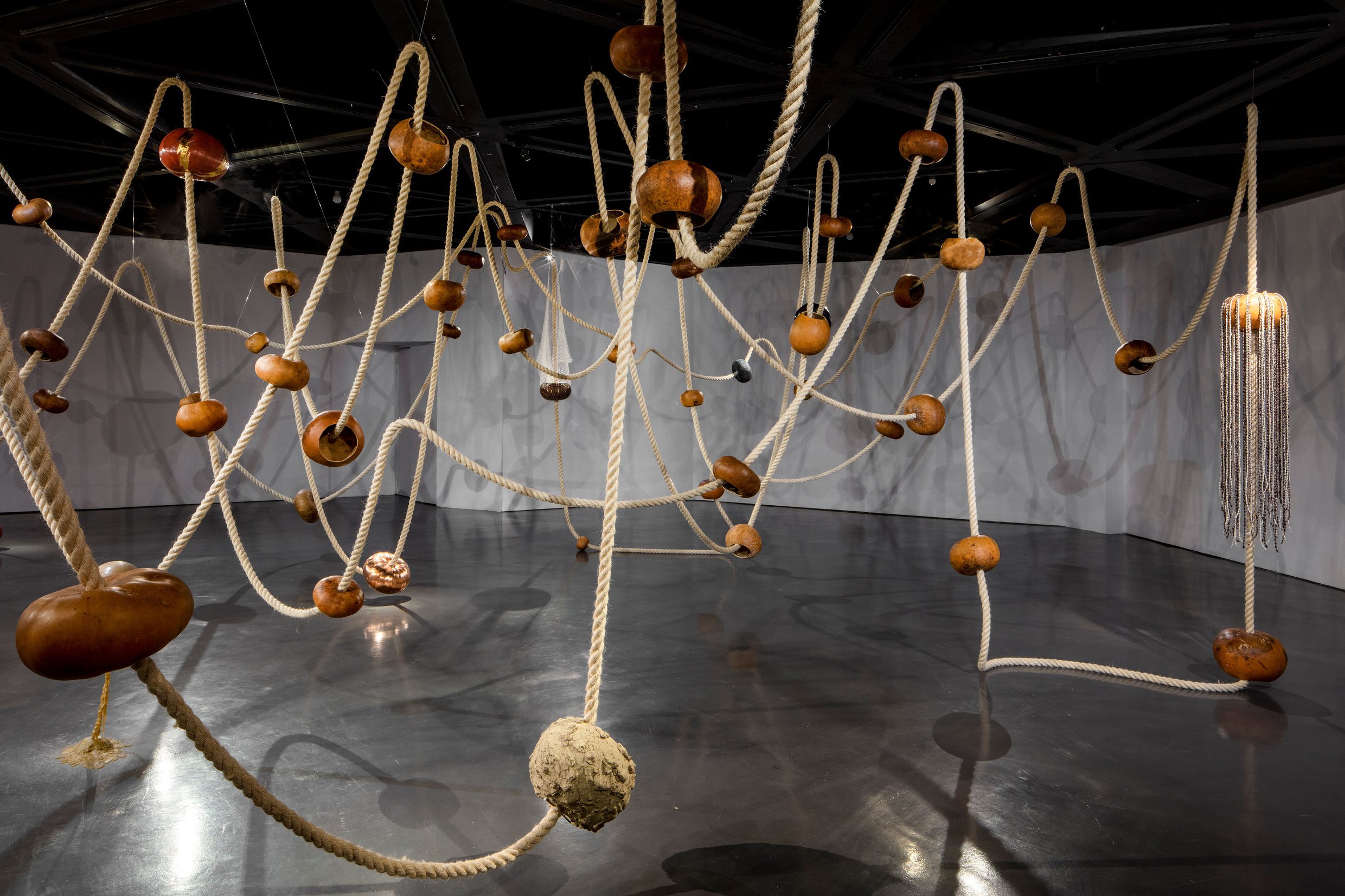Colección FEMSA joins CIMAM as a Supporter

We are delighted to welcome Colección FEMSA as a CIMAM Supporter, joining us in September 2024!
Colección FEMSA’s mission is to contextualize art within the challenges that face our planet while generating community through significant, transformative projects that motivate citizen participation.
For more than 45 years, the Collection has promoted, documented, and disseminated modern and contemporary Latin American artworks through temporary exhibitions and a works-on-loan program, as well as through varied educational activities and discussions.
The Collection illustrates the evolution, complexity, and richness of artistic production in Latin America during the 20th and 21st centuries, with emphasis on Mexican artistic production.
Colección FEMSA is part of Fomento Económico Mexicano, S.A., a Mexican company that has continually diversified itself over 130 years.
Promoting culture is one of the company’s long-held interests, thanks to encouragement from the founding family. The company’s artistic interests materialized in the 1977 formation of the FEMSA Collection, when the founding family donated El maizal (Milpa seca) by Mexican artist Gerardo Murillo (Dr. Atl). From that moment on, the Collection has grown by acquiring modern and contemporary art from Latin America, with a particular interest in Mexican art.
Find out more about Colección FEMSA and Bienal FEMSA with this interview with the curatorial team, made up of Laura Pacheco, Paulina Bravo, Eugenia Braniff and Beto Díaz.
The mission of Colección FEMSA is to be a collection that connects the arts and people with the challenges facing the planet, promoting citizen participation and addressing social issues through art. How do you define this purpose within the context of the needs of the artistic ecosystem in Mexico and Latin America?
The arts respond to their context; they do not arise spontaneously. The intention of connecting the challenges we face as a species responds to the Colección FEMSA interest in detonating critical thinking through interaction with art and inviting reflection on social issues. Through an intersectional approach, we seek to raise questions about how we inhabit the planet, how we relate to it and to all beings that inhabit it. In addition, we believe in the power of each individual's actions to generate a multiplying effect of collective participation.
In that sense, there is much to be done. The collection joins the efforts of many other organizations in Mexico and Latin America that share the same aspirations: to train new users, connect with those who are already familiar with the visual arts, and facilitate tools for dialogue with these manifestations. It is also key to respond sensitively to the social and economic complexities of the global south, specifically in context with our geography and linking ourselves with territories whose spaces do not have optimal conditions or educational systems that include the arts in their programs. For this reason, Colección FEMSA also shares its collection outside Mexico, with the interest of expanding its collaboration networks in different countries.

How do educational and mediation activities work to generate community and citizen participation?
Colección FEMSA understands art as a means to detonate creativity and knowledge, as well as to generate connections with reality through critical thinking and imagination. The public program develops activities that complement the exhibition dimension while simultaneously serving as a link with the Bienal FEMSA.
Through workshops, conferences, lectures, guided tours, and publications, among others, it seeks to create spaces for dialogue and citizen participation while contributing to community building. On the other hand, in conjunction with the host institutions that receive the collection, we design educational and mediation programs under the common understanding that the visual arts allow us to build, deconstruct, reconstruct and share knowledge.

In its 47 years of existence, what have been the main challenges you have faced in managing Colección FEMSA?
One of the greatest challenges we have encountered in the management of the collection is the transfer of knowledge among the people who have formed the collection in its different areas and different moments, from its beginnings in 1977 to the present day. As we approach the 50th anniversary of the Colección FEMSA, we feel it is very important not only to talk about the history of the institution but also about those who have contributed to it, inhabited, and transformed it over the years. A collection is not only composed of the objects it contains but also of the stories of all those who surround it.
This challenge has led us to ask ourselves what we can do today to build conditions that can continue to be developed over the next 50 years of the collection. The response has been an arduous internal effort to review the governance of acquisitions, curatorial work, and the improvement of processes involved in the day-to-day operations for the preservation of acquis. Our guidelines have been the recommendations of international organizations, as well as the incorporation of an innovative and intersectional approach in the composition of our committees.
How have you maintained and strengthened the collection's purpose over the years?
The collection has the support and backing of FEMSA, a Mexican company with more than 130 years of solidity, with operations in 18 countries and considered one of the most important companies in Latin America. Since the beginning of the Colección FEMSA, more than 45 years ago, its structure and collection have undergone different processes of revision and reflection that have influenced its direction and vocation. Our world, as well as the discussions and explorations of contemporary art, have changed; therefore, as an institution, we have to rethink our constitution and areas of action.
A fundamental aspect is our commitment to the visual arts in Latin America and to sharing our collection with different people and in different latitudes. With this idea in, since the beginning of 2023, we began a process to update our mission as a space for connection, dialogue, and reflection between people, ideas, and communities through art. The collection constitutes the starting point for the development of proposals and content focused on dissemination, research and historicization of diverse artistic manifestations.
The Bienal FEMSA was established in 1992 with the objective of promoting artistic creation in Mexico. What led to the decision to transform it into an itinerant and decentralized curatorial platform, and what impact has it had on the promotion of critical thinking?
Throughout its 32 years of existence, the Bienal FEMSA -located in Mexico- has undergone several transformations with respect to the categories it includes and the prizes it awarded when it was governed by the competition format. In its 12th edition, it was transformed into a hybrid format that maintained and added a curatorial program with commissions and invited works. It was a change that marked the transition to a biennial structure with a curatorial program that, since then, changed the venue for each edition. The objective was to move the biennial from the centers of artistic production in large cities to other territories of the country. Through the curatorial selection, a program of activities and commissioned works available to the public for a period of three months, the biennial seeks to promote exchanges between artists of different generations and groups of people.
In its last three editions, it has been hosted by a planetarium, historical museums, contemporary art museums, a library and a market. It has also commissioned nearly 50 works, reflected on the socio-historical contexts of three states, and integrated around 20 works into the Colección FEMSA.

Since September 2024, the Colección FEMSA has been a Supporter of CIMAM. What value do you see in this link with the International Committee of Museums and Collections of Modern and Contemporary Art for the fulfillment of its mission?
For Colección FEMSA it is very important to dialogue with other institutions and agents, to bring to the table discussions and reflections from the global south, to share interests and best practices, and to find possible alliances and collaborations.
We are an institution that, by its nomadic nature, seeks to constantly collaborate with others in an organic way. We are pleased to link with an organization that brings together visual arts workers and contributes to their training and professionalization. We believe that collaborative networks with organizations such as CIMAM broaden the reach of the Colección FEMSA, while expanding the visibility and importance of modern and contemporary Latin American art on a global platform.
Looking ahead, how do you expect Colección FEMSA to continue to strengthen its impact on the artistic ecosystem in Mexico and Latin America?
Colección FEMSA seeks to mediate artistic complexity through significant projects, such as commissions, exhibitions, and publications that offer an approach to modern and contemporary Latin American art. To achieve this, we are exploring and piloting new programs and areas of action in collaboration with different organizations, which we will soon share through our social media channels and website. In addition, we are preparing the celebration of the 50th anniversary of the Colección FEMSA, whose objective will be to share with a wider public the historical and artistic value of the visual arts in Latin America.
In commitment to the social and geographic context in which it is located as an institution, and with the objective of strengthening the artistic ecosystem of Mexico and Latin America, Colección FEMSA will continue to highlight and promote the work of artists from the region through commissions and new areas of action.
What sustainability-related projects are being developed and what Sustainable Development Goals are being pursued through your activities?
As part of the company's strategic sustainability framework, which consists of the company's ability to generate the social, environmental, and economic conditions to operate in the present and in harmony with the environment and society, Colección FEMSA contributes to community well-being through its cultural offerings. We do so in line with the Sustainable Development Goals (SDGs) for 2030 of the United Nations, specifically with Goal 11, which aims to build more inclusive, safe, resilient and sustainable cities.
In addition, as part of Goal 17 - focused on creating partnerships to achieve each goal - we held a forum on Public-Private Partnerships in Culture within the framework of Mondiacult 2022, in which we convened 115 key actors of the Mexican cultural ecosystem to discuss opportunities to work together towards the sustainability of the sector in the current environment, as well as to analyze the potential of culture to achieve the SDGs. We will share the results of this forum with the public in the near future.
We are also in the process of evaluating our facilities to ensure the efficiency of the cooling equipment in the warehouses that house our collections. Among these efforts is the recovery of condensate water from air conditioning equipment irrigation and cleaning of office areas. On the other hand, we have incorporated a policy of using soft packaging for short transfers, as well as the reuse of packing boxes. These actions are made possible by the personnel, equipment, material, and tools we have at our disposal to carry out our operations.